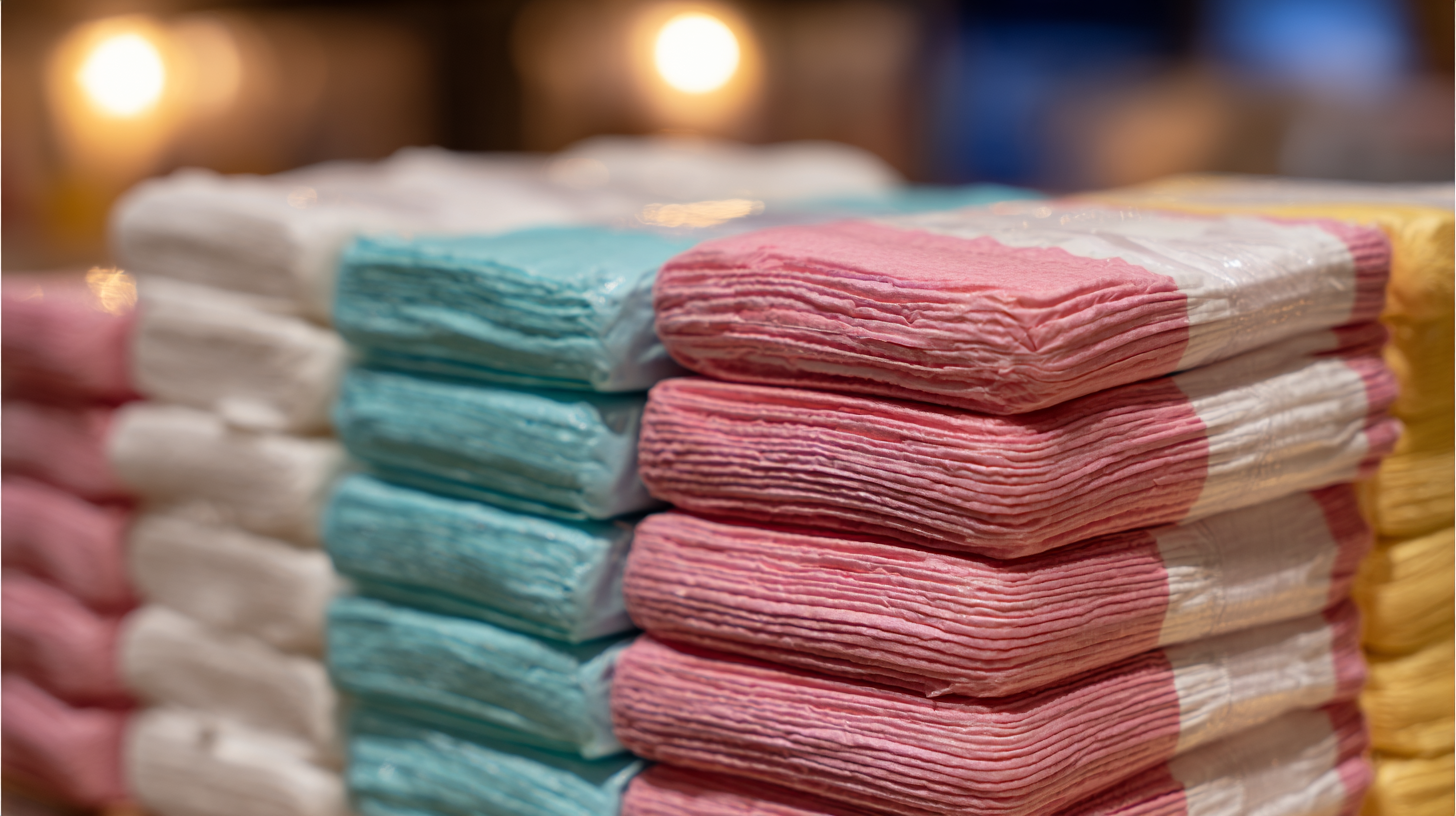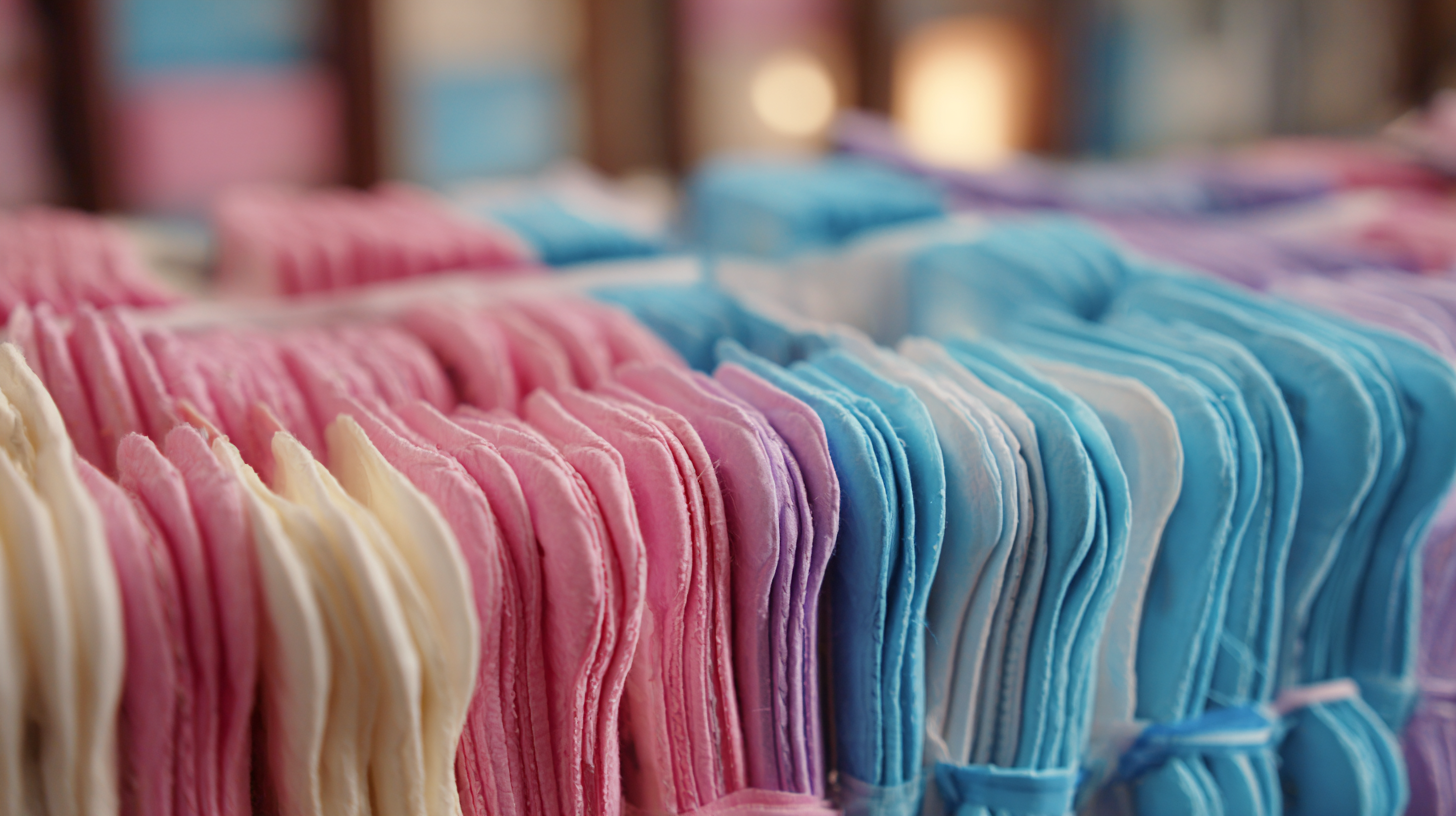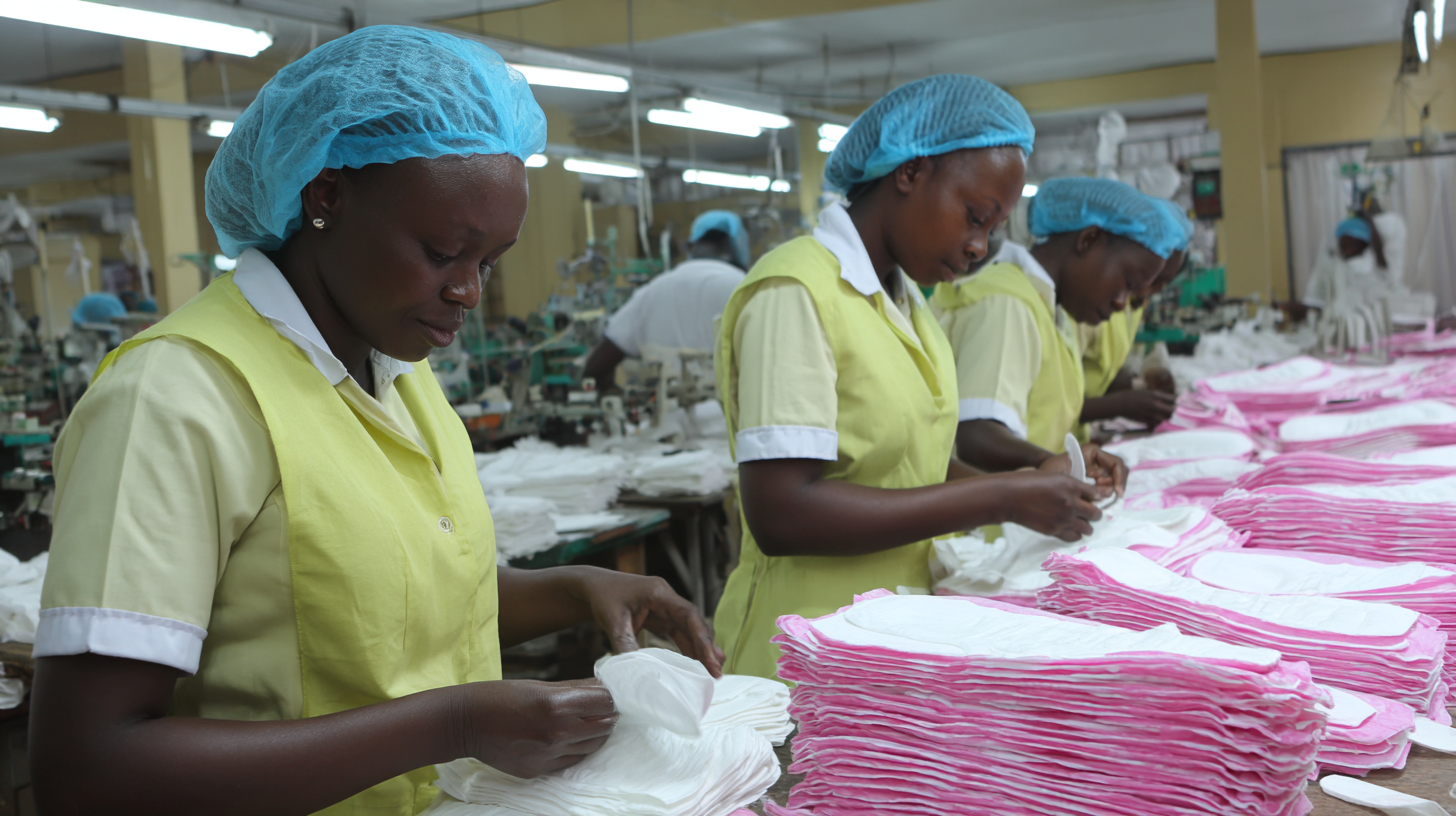
Understanding the Production Standards for the Best Everyday Sanitary Pads Fiber in the Global Market
 The global market for Everyday Sanitary Pads Fiber is poised for significant growth in the coming years, driven by increasing consumer awareness and demand for high-quality hygiene products. According to a recent report by Grand View Research, the global feminine hygiene market, which includes sanitary pads, is expected to reach USD 44.3 billion by 2025, growing at a CAGR of 6.9% from 2019 to 2025. This surge is fueled by a rising preference for eco-friendly materials and innovations in fiber technology. Manufacturers are now focusing on adhering to stringent production standards to enhance the absorbency, comfort, and biodegradability of Everyday Sanitary Pads Fiber. This blog will explore these evolving production standards and their impact on consumer choices, as well as potential trends shaping the industry landscape leading up to 2025.
The global market for Everyday Sanitary Pads Fiber is poised for significant growth in the coming years, driven by increasing consumer awareness and demand for high-quality hygiene products. According to a recent report by Grand View Research, the global feminine hygiene market, which includes sanitary pads, is expected to reach USD 44.3 billion by 2025, growing at a CAGR of 6.9% from 2019 to 2025. This surge is fueled by a rising preference for eco-friendly materials and innovations in fiber technology. Manufacturers are now focusing on adhering to stringent production standards to enhance the absorbency, comfort, and biodegradability of Everyday Sanitary Pads Fiber. This blog will explore these evolving production standards and their impact on consumer choices, as well as potential trends shaping the industry landscape leading up to 2025.
Understanding the Global Sanitary Pad Market: Key Fiber Production Standards
Understanding the Global Sanitary Pad Market: Key Fiber Production Standards
The global sanitary pad market has seen significant advancements in fiber production standards, which are crucial for ensuring product quality and consumer safety. In this competitive landscape, manufacturers are increasingly adopting nonwoven technology, such as dry laid, spunbond, and wet laid processes, to enhance the absorbency and comfort of everyday sanitary pads. Understanding these production methods helps consumers make informed choices about the products they use.
When selecting sanitary pads, it's essential to consider the type of fibers used. For instance, natural fibers like those derived from plants, such as agave sisalana, are gaining popularity due to their sustainability and absorbent properties. In contrast, synthetic fibers continue to dominate the market due to their strength and efficiency.

**Tip 2:** Research brands that prioritize sustainable materials in their fiber production. Choosing eco-friendly options not only supports responsible manufacturing practices but also benefits the environment.
**Tip 3:** Consider personal comfort preferences, as different fiber types can affect skin sensitivity. Experimenting with various products can help you find the best fit for your lifestyle.
Examining the Role of Fiber Quality in Everyday Sanitary Pads: A Market Overview
The quality of fiber in everyday sanitary pads plays a crucial role in both performance and comfort. In recent years, there has been a significant shift towards sustainable and high-quality materials in the feminist hygiene market. With the projected market size expected to reach USD 60.34 billion by 2033, brands are increasingly focusing on eco-friendly fibers that not only provide absorbency but also minimize environmental impact. The adoption of materials like organic cotton and innovative fibers derived from plants reflects a growing consumer preference for products that prioritize health and sustainability.
When selecting sanitary pads, consider these helpful tips: First, look for products labeled as free from harmful chemicals and synthetic materials. This ensures a gentler experience on your skin and reduces the risk of irritation. Second, choose pads that feature natural fibers, as they are typically more breathable and comfortable. Finally, consider the brand's commitment to sustainability; many forward-thinking companies are incorporating responsibly sourced and biodegradable materials into their products, allowing you to make a conscientious choice that benefits both your body and the planet.

Comparative Analysis of Raw Material Sources for Sanitary Pad Fibers: Sustainability and Safety
When it comes to the production of sanitary pads, the choice of raw materials significantly influences sustainability and safety in the market. Various fibers are used globally, including cotton, synthetic polymers, and biodegradable options. Cotton is often favored for its softness and breathability; however, its cultivation may involve pesticides and vast water consumption, raising concerns about environmental impact. On the other hand, synthetic fibers, while cost-effective and absorbent, can contribute to landfill waste and pollution, as they are non-biodegradable.
In recent years, there has been a shift towards more sustainable alternatives. Many brands are exploring innovative materials such as bamboo, which grows rapidly and requires fewer resources to cultivate. Additionally, organic cotton options are gaining popularity as they reduce pesticide use and offer a more eco-friendly choice for consumers. It is essential for manufacturers to prioritize sourcing these eco-conscious materials while ensuring product safety and comfort for users. As consumers become more aware of their choices, the demand for sustainable sanitary pad fibers is likely to shape the future of this market, promoting practices that support both health and the planet.
Understanding the Production Standards for the Best Everyday Sanitary Pads Fiber in the Global Market
| Raw Material | Source | Sustainability Rating | Safety Certification | Environmental Impact |
|---|---|---|---|---|
| Cotton | Organic Farms | High | OEKO-TEX | Low |
| Viscose | Sustainable Forests | Medium | FSC Certified | Moderate |
| Polyester | Recycled Plastics | Low | ISO 9001 | High |
| Biodegradable Plastics | Plant-Based Sources | High | EN 13432 | Low |
Impact of Regulatory Standards on Sanitary Pad Fiber Production: A Global Perspective
The production of sanitary pads has increasingly come under scrutiny as awareness of health and environmental issues grows among consumers and regulators alike. Regulatory standards play a crucial role in shaping the fiber production landscape for these everyday essentials.
For instance, the Global Industry Standards for sanitary products, particularly those set by organizations like the International Organization for Standardization (ISO), emphasize safety, biodegradability, and material transparency. Reports indicate that approximately 70% of consumers actively seek eco-friendly materials in sanitary products, prompting manufacturers to align their fiber sourcing with these evolving standards.
Moreover, a comprehensive study by Smithers Pira projects that the global market for sanitary napkins will exceed $38 billion by 2025, driven by the rising demand for quality and regulation-compliant products. In Europe, the regulation REACH (Registration, Evaluation, Authorisation and Restriction of Chemicals) significantly impacts the types of fiber used, ensuring harmful substances are minimized. This regulatory framework not only protects consumers but also pushes manufacturers to innovate by developing sustainable alternatives. Consequently, regulatory standards not only enforce safety but significantly influence the production strategies of sanitary pad fibers, driving a shift towards both health-conscious and environmentally sustainable options at a global scale.
Trends in Consumer Preferences for Sanitary Pad Fibers: Insights from Recent Market Research
In today's evolving global market, consumer preferences for sanitary pad fibers are experiencing significant transformation. Recent market research highlights a growing demand for eco-friendly and sustainable options, indicating that consumers are increasingly conscious of the environmental impact of their choices. This shift is not merely a trend but an essential movement towards sustainable menstrual hygiene, as disposable and non-organic products contribute heavily to waste and resource depletion.
The projected growth of the feminine hygiene products market, reaching USD 60.34 billion by 2033 with a CAGR of 5.87%, underscores the importance of adapting to these changing preferences. Bicomponent fiber, for example, is gaining traction within this sector, with its market expected to reach USD 3.92 billion by the same year. As more consumers seek products that align with their values, the focus on innovative materials that provide both comfort and sustainability is more critical than ever. This evolution in consumer behavior not only shapes product development but also paves the way for a more responsible approach to menstrual hygiene.



